Should stop signs return to Bloomington’s 7-Line bike lane? Traffic commission next to take up question
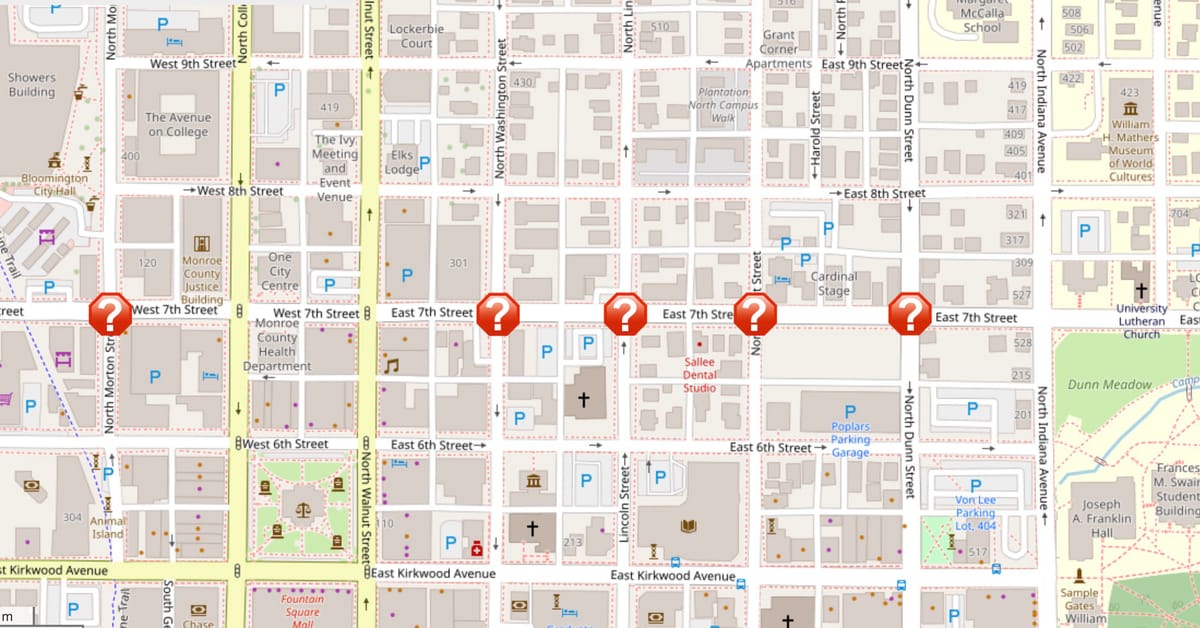
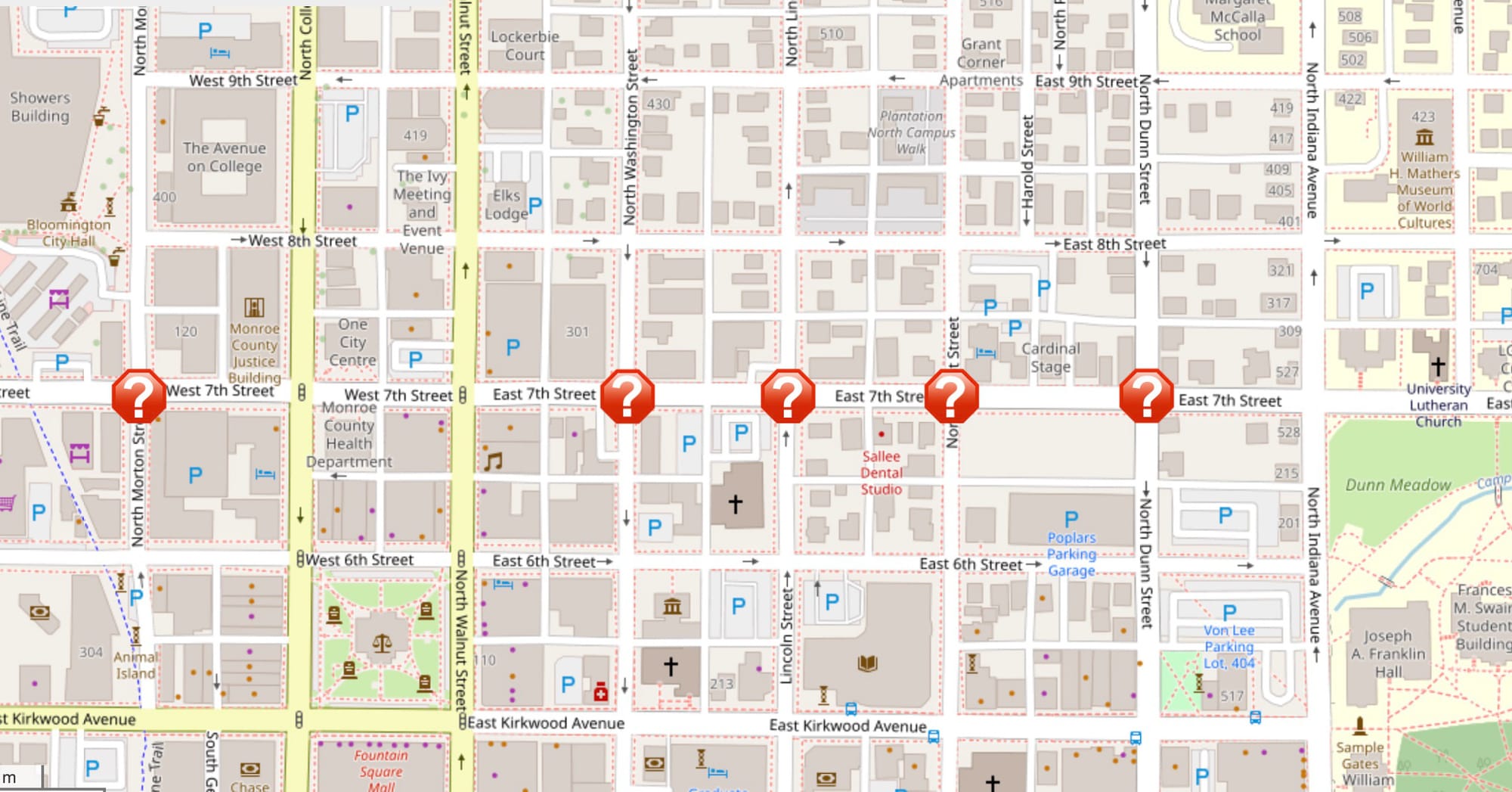
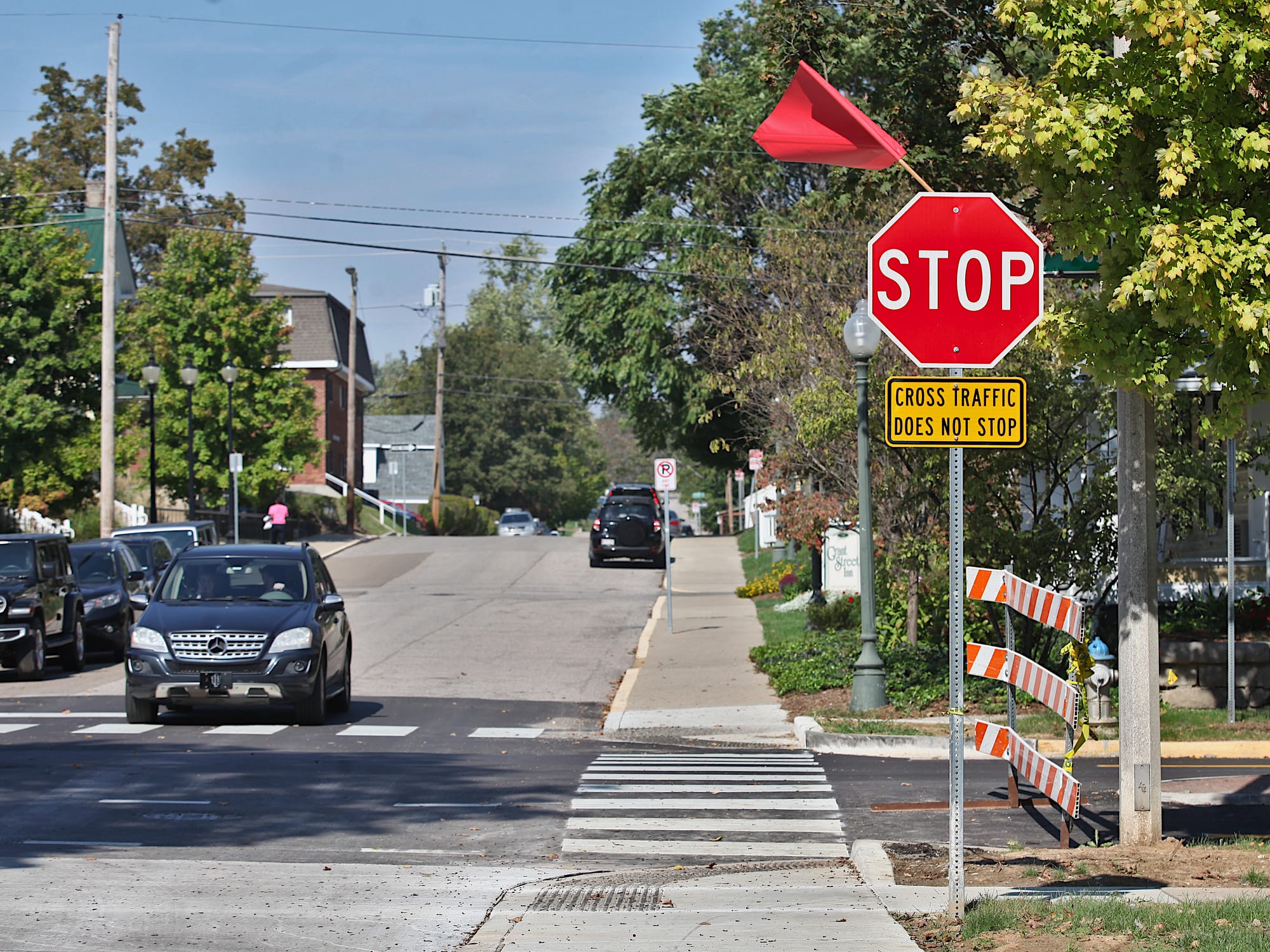
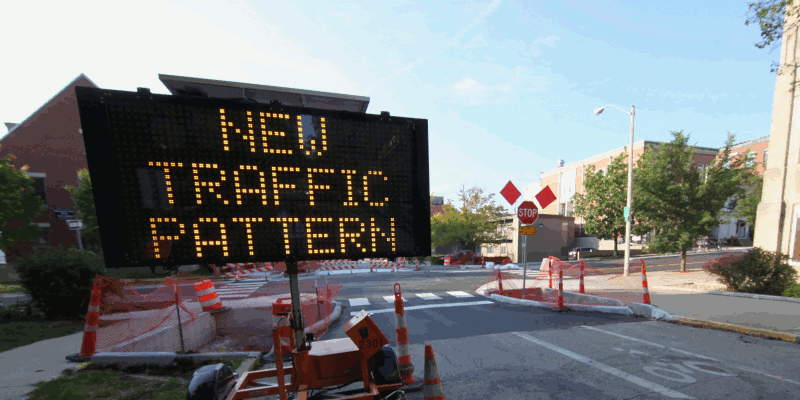
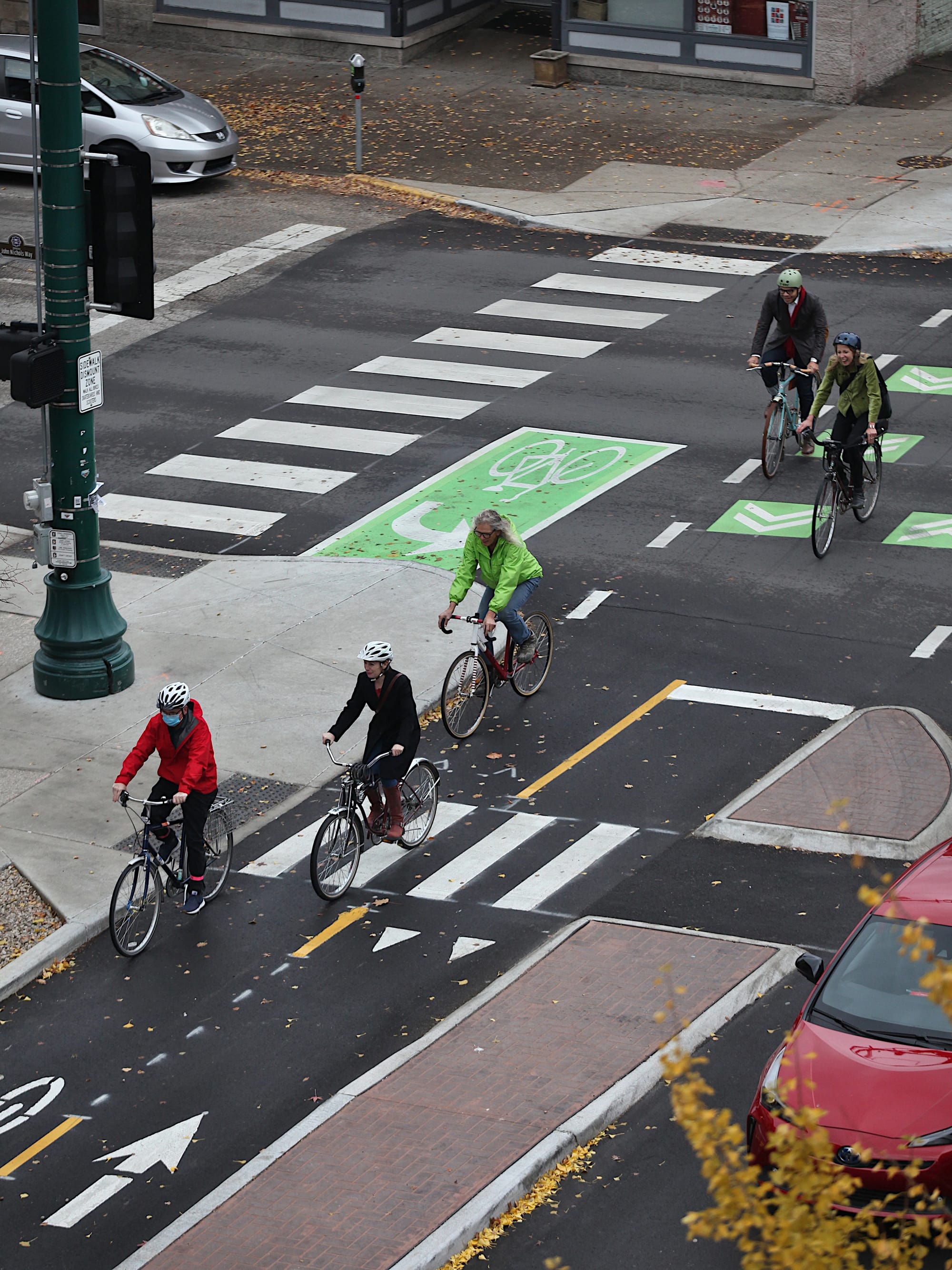
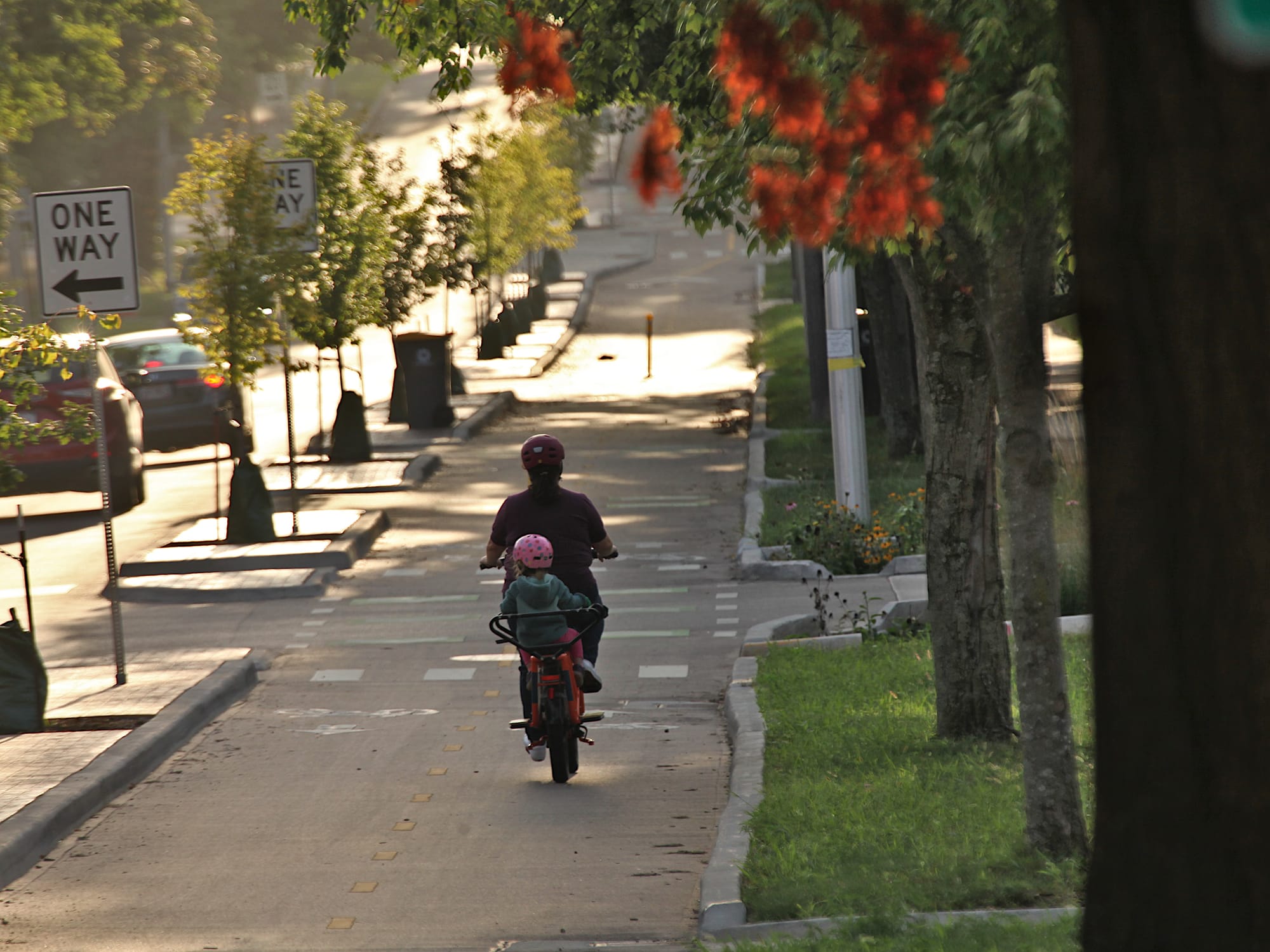
When Bloomington’s 7-Line separated bicycle lane was built in 2021, five stop signs for east-west 7th Street traffic were removed, under an ordinance enacted by the city council.
The stops for 7th Street traffic at Morton, Lincoln, Washington, Grant, and Dunn streets were removed, but those for the north-south side streets were left in place.
The elimination of the stops was meant to encourage the use of the east-west corridor by cyclists.
Now with a year’s worth of crash data in hand after the opening of the 7-Line, Bloomington’s city engineer Andrew Cibor is recommending that the five stop signs be reinstalled.
The reinstallation of the stop signs would have to be approved by the city council. Before the city council considers the engineer’s recommendation, two of the city’s advisory boards are supposed to weigh in—the bicycle and pedestrian safety commission (BPSC) and the traffic commission.
On Monday, the BPSC unanimously rejected the idea that all five stop signs should be reinstalled. But the BPSC unanimously supported reinstallation of the 7th Street stop signs at Dunn Street.
Next up to hear Cibor’s report will be the traffic commission, which meets at 4:30 p.m on Wednesday.
Cibor’s presentation to the city’s bicycle and pedestrian safety commission included some positive impacts, in addition to crash statistics.
Cibor’s report included a 25-percent increase in annualized bicycle and pedestrian counts at Park Avenue and 7th Street, near the Indiana University campus. The first period of comparison was from 2017 to 2019. The second period was the time after the 7-Line was opened in late 2021.
But Cibor’s report indicated that the 7th Street corridor showed an increase from 6.25 crashes per quarter to 10.25 crashes per quarter.
When the crashes are broken down by intersection, 7th Street at both Washington and Lincoln had 5 crashes in the last year. And 7th Street at Dunn had 12 crashes.
The guidance in the MUTCD (Manual on Uniform Traffic Control Devices) says that in order to add stop signs to create an all-way stop, an intersection should meet one of several criteria. One of the criteria is 5 or more reported crashes in a 12-month period that are susceptible to correction by a multi-way stop.
Cibor’s recommendation to reinstall the stop signs at all five intersections is based on the fact that three out of the five intersections meet the criterion for number of crashes. Cibor said the other two intersections were trending upward, even if they had not hit five crashes.
The vote by BPSC members to reject the reinstallation of all five stop signs came after a half dozen turns of public commentary, from speakers who were uniformly opposed to reinstallation of the stop signs.
Some of the commentary came from cyclists who reported that they have started using the 7-Line precisely because 7th Street traffic was not required to stop. At Morton Street, in the uphill (east) direction, a stop sign would mean loss of momentum that is useful for pedaling up the hill.
Cibor noted that in some of the police reports for the crashes, motorists who were approaching 7th Street on a north-south side street told the responding officer they thought it was an all-way stop. BPSC member Mitch Rice reacted to Cibor’s note by saying it’s a problem that motorists are causing. “I think this is in the lap of motorists,” he said.
Cibor is a member of the traffic commission, which will be the second advisory board to consider the 7th Street stop signs. The traffic commission’s meeting starts at 4:30 p.m on Wednesday.
Responding to a question from a BPSC member, Cibor said he is not certain when the issue of stop signs on 7th Street might be put in front of the city council. “Currently, this is, as far as I know, not even on the city council’s radar,” Cibor said. After the traffic commission has weighed in, Cibor said he’ll reach out to the city council’s office.
The issue is actually on at least one city councilmember’s radar. At the city council’s final meeting of 2022, on Dec. 21, Dave Rollo said during report time at the start of the meeting, “One important topic that was raised at councilmember Sandberg’s and my constituent meeting was pedestrian crossing on 7th Street.”
Rollo continued, “And I think that we should consider placing stop signs back there for safe crossing.” He added, “I might come forward with legislation in the coming weeks or months. But I would like to have a full throated discussion about that.”




Comments ()